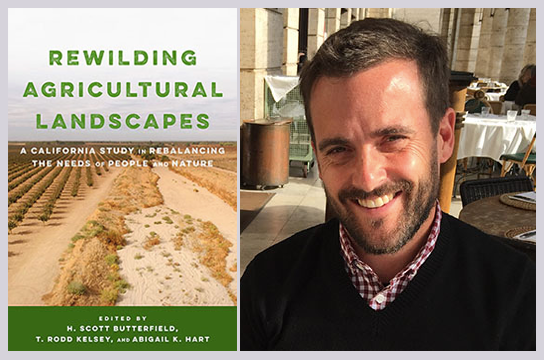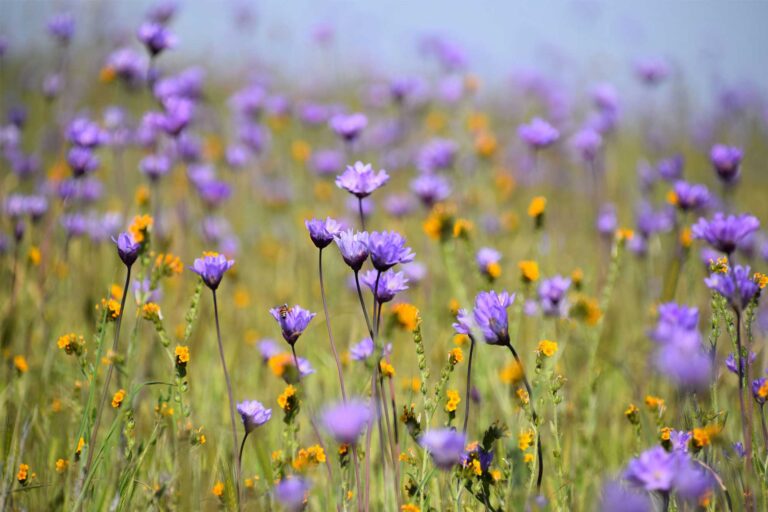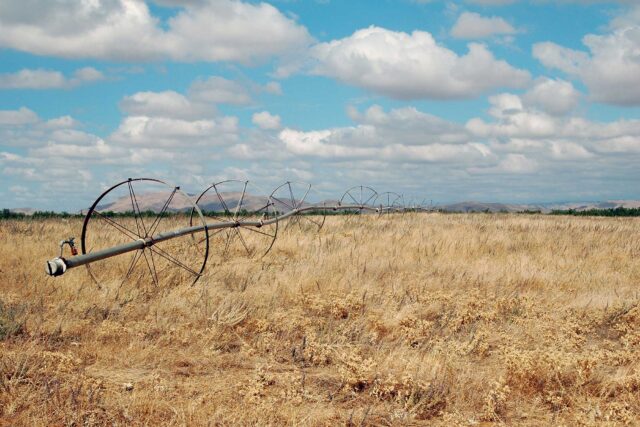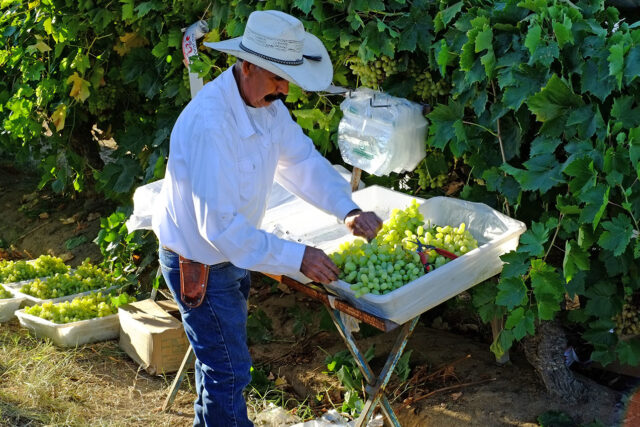The San Joaquin Valley’s quest for groundwater sustainability will result in large amounts of irrigated agricultural lands being retired. A new book explores how some of these lands could be restored to natural areas that bring multiple benefits. We talked to Scott Butterfield, a senior scientist at The Nature Conservancy and one of the book’s editors, about this vision.

PPIC: The book describes a vision for “rewilding” retired agricultural land. How might this work in the San Joaquin Valley?
SCOTT BUTTERFIELD: “Rewilding” in the context of the San Joaquin Valley means creating functional ecosystems that support a suite of native plants and animals. We’re thinking about how to repurpose the agricultural lands that are most at threat of being retired under the Sustainable Groundwater Management Act (SGMA) or for other reasons—lands where farming is likely no longer sustainable. We’re interested in working with farmers, irrigation districts, groundwater sustainability agencies, and others to strategically retire and restore these agricultural lands in ways that benefit the natural environment and improve people’s lives in various ways. The valley will still have a large agricultural footprint, and it’s important this be sustained. We want to help reduce the top-level impact on farmers from SGMA and, where farming can be sustainable, keep them farming.
PPIC: What are some tangible benefits the valley could see from this approach?
SB: For nature, the most tangible benefit is the recovery of at-risk plant and animal species. The valley has one of highest concentrations of threatened and endangered species in the continental US. If done right, rewilding could deliver species recovery at a scale that hasn’t been seen before.
For people in the valley, rewilding will also contribute important health benefits through improved access to open space, and cleaner air and water—both of which are quite impaired right now.
PPIC: Are there good examples of restoring impaired agricultural lands in the valley?
SB: Yes. Four that come to mind are Atwell Island, the Kern Water Bank, the Carrizo Plain, and the Wind Wolves Preserve. All of these areas were once farmland; now they support native species, both plants and animals. We hope to learn from these examples to develop restoration strategies that can be scaled across the valley.
While each of these cases can teach us a lot, no one has successfully done restoration—in this ecosystem or elsewhere—at the scale of tens of thousands of acres that we are contemplating. Nor are there many projects that successfully bring back endangered species to a restored landscape. Endangered species are the hardest to bring back—you have to have a permit to handle them, and it’s very risky to move them from one place into another to reestablish populations. And you can’t put endangered species into this new habitat until it’s self-sustaining.
PPIC: What are the key uncertainties that still need working out?
SB: There’s lots to figure out to successfully rewild some land while also keeping active farming nearby—it’s a novel process in many ways. It will require experimentation. For example, restoring soil to be self-sustaining over thousands of acres will be complex, but is essential to any restoration project. Restoring plants will also require experimentation, using plants that are both genetically suited to a particular landscape while also able to adapt to a changing climate. It’s crucial that we plan not just for what can exist now but also for what can persist into the future. How do we collect that much seed and grow it? We have to start farming these native plant species if we’re going to restore habitat at scale. This can be one way to help offset economic impacts to farmers, some of whom can go from growing traditional crops to farming native plants.
PPIC: Talk about ways to pay for this effort.
SB: Restoration is very expensive, especially at this scale. To start, we’ll need some combination of public funding—especially for pilot projects that show how it can work—and private philanthropy. But longer term, we’ll need land use policies that support the benefits restoration will bring—for example, cleaner air and water. Solar energy and other sustainable land uses may also be able to support this work while offsetting landowners’ costs of taking land out of production.
Rewilding can bring a more sustainable future to the valley. The more pilot projects we can get on the ground to show how restoration can offset the impacts of losing some farmland, the more excitement we’ll see.




